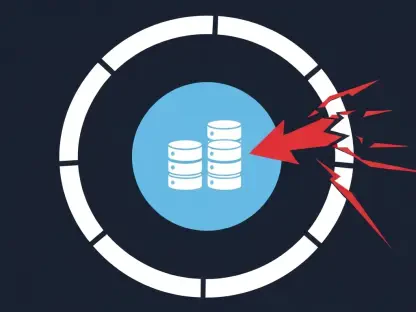In the ever-evolving landscape of logistics and transportation, the integration of data analytics into trucking safety has become a transformative force. The staggering figure of over 43,000 motor vehicle-related fatalities reported by the U.S. Department of Transportation reignites the urgency to adopt smarter, predictive strategies. Advances in technology and data analysis are paving new avenues for the industry, offering unprecedented opportunities to enhance driver safety and operational efficiency. By leveraging data from diverse sources, companies are increasingly able to predict accidents, streamline claims processes, and redefine precautionary measures. The compelling question is: how are these evolving technologies reshaping the safety paradigms of the trucking sector?
Predictive Analytics in Accident Prevention
Harnessing Real-Time Data for Safety Enhancements
One of the primary functions of modern data analytics in trucking is its role in predicting and preempting accidents before they occur. Organizations like the NYC Data Science Academy are at the forefront of this movement, utilizing extensive datasets from millions of crash records to develop sophisticated predictive models. These models are empowered to identify accident hotspots and profile driver behavior, thus directly influencing route planning and safety protocols. By assessing vast volumes of data, these systems significantly contribute to reducing liability and enhancing driver safety. They present a statistical roadmap that alerts companies to potential threats, thereby fostering a culture of proactive risk management within fleets.
Integration of GPS and Telematics for Real-Time Monitoring
The fusion of GPS and telematics technology forms a critical apparatus for gathering real-time data across trucking operations. GPS systems pinpoint a truck’s exact location, speed, and route, while telematics offer a broader snapshot, capturing details such as speed variations, steering inputs, and vital diagnostic conditions. Together, these data streams provide an intricately detailed account of trucking activity, activating new levels of transparency and accountability. In the event of an incident, these technologies power the legal casework by accurately reconstructing the sequence of events, thus facilitating clearer determinations of liability.
Legal Implications and Insurance Innovations
The Objective Role of Data in Legal Contexts
Within legal frameworks, the reliability of data turns subjective narratives into concrete insights. Discrepancies between eyewitness accounts and driver testimonies can lead to ambiguity, but the objectivity of data—from GPS coordinates to telematics inputs—offers an invaluable source of truth. This clarity is vital in legally charged environments, helping professionals definitively establish fault and determine driver compliance with key regulations, such as Hours of Service mandates. The undeniable precision of these data points circumvents human error, presenting an irrefutable narrative to support legal claims and procedural adjudications.
Expediting Insurance Claims Through Digital Integration
Beyond enhancing safety, data analytics is revolutionizing how the insurance industry manages claims processes associated with trucking accidents. Current trends indicate widespread adoption, with the vast majority of insurance firms turning to data-driven methodologies to expedite claims and thwart fraudulent activities. Real-time monitoring provided by advanced sensors in fleets helps directly by continuously evaluating parameters like speed and braking. As fleet managers receive instant alerts tied to dangerous behaviors, they can implement corrective actions faster than ever before, preventing risks from materializing into actual incidents. Consequently, this promotes an ecosystem of vigilant oversight and swift resolution.
Streamlining Operations and Beyond
The Wider Impact on Fleet Management
The strategic application of data analytics transforms more than just individual driving behavior; it revolutionizes entire fleet management practices. By allowing managers to access aggregated data insights across all vehicles, companies make informed decisions proactively. Real-time feedback mechanisms illuminate hazardous trends or emerging concerns, allowing preemptive measures to be conducted seamlessly. Furthermore, they foster an environment where insights translate into immediate fruitions, raising overall safety standards and elevating operational efficiency across diverse portfolios.
Legal and Technical Expertise in Data Utilization
In the rapidly changing world of logistics and transportation, integrating data analytics into trucking safety has proven to be a revolutionary shift. With the U.S. Department of Transportation reporting over 43,000 motor vehicle-related fatalities, there’s an urgent need to adopt intelligent, predictive strategies to enhance safety. Technological advancements and data analysis open new paths for the industry, presenting unmatched opportunities to improve driver safety and boost operational efficiency. By harnessing data from a variety of sources, companies are becoming more adept at forecasting accidents, optimizing claims processes, and reinventing precautionary measures. This raises a critical question: in what ways are these evolving technologies transforming the safety standards in the trucking sector? As companies continue to invest in these technologies, they are not only focusing on accident prevention but also on cultivating safer driving behaviors and using data-driven insights to mitigate risks and improve overall safety protocols.









